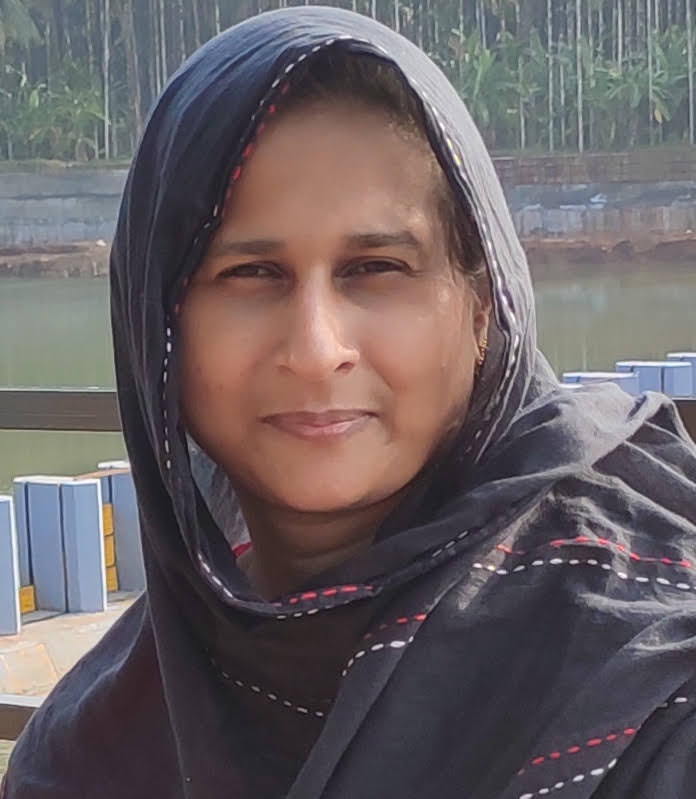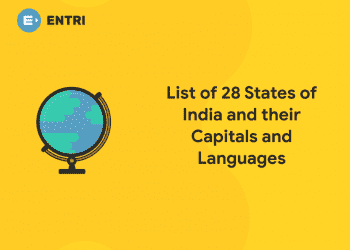Table of Contents
International days are marked to educate the public on issues of concern, to address global problems and to celebrate and reinforce achievements of humanity. These observances serve as powerful platforms to unite people across nations in a common cause, spark meaningful dialogue, and inspire action. Each international day provides the community an opportunity to organize activities related to the theme and to create public awareness on the same. They encourage learning, reflection, and community engagement, helping to build momentum around pressing global challenges and highlighting the need for collective solutions. Organizations, governments, public and private sectors, schools, universities, civil society groups, and individuals come together to make international days a springboard for awareness-raising initiatives, educational campaigns, and policy advocacy. These observances also honor the resilience of communities and individuals impacted by the issue being highlighted, offering solidarity and support. In this article, let us check the World Hemophilia Day 2025 – Quiz, History and Theme!
World Hemophilia Day 2025 Date – April 17
In this article readers can get a glimpse on:
-
History and Objective of World Hemophilia Day
-
World Hemophilia Day Theme 2025
-
World Hemophilia Day Quiz
History and Objective of World Hemophilia Day
World Hemophilia Day was first observed in 1989 by the World Federation of Hemophilia (WFH), with the objective to raise awareness about hemophilia and other bleeding disorders. The date, April 17, was chosen in honor of the birthday of Frank Schnabel, the founder of the WFH. This international observance aims to bring together the bleeding disorders community, increase public understanding, and advocate for improved diagnosis, treatment, and access to care around the world.
Hemophilia is a rare genetic disorder in which the blood does not clot properly due to the absence or low levels of clotting factors. This can lead to excessive bleeding, both external and internal, which may be life-threatening if not managed appropriately. People living with hemophilia often face challenges in accessing proper medical care, particularly in developing countries, where treatment options may be limited or unavailable.
World Hemophilia Day serves as a global platform to highlight these challenges and to unite stakeholders — from health professionals and policymakers to patients and families — in efforts to improve the quality of life for those affected. Each year, awareness campaigns, educational events, and advocacy programs are organized across countries to promote early diagnosis, comprehensive care, and the importance of continued research.
Through consistent observation of this day, WFH and its global partners emphasize the need for “treatment for all” — ensuring that every person with a bleeding disorder, regardless of geography or economic status, receives the care and support they deserve.
World Hemophilia Day Theme 2025
The theme of World Hemophilia Day 2025 is:
“Access for All: Women and Girls Bleed Too”
This year’s theme draws attention to a long-overlooked reality — that women and girls can and do experience bleeding disorders too. Although hemophilia is commonly associated with males, many females live with bleeding symptoms due to being carriers of hemophilia or having other inherited bleeding disorders such as von Willebrand disease.
The 2025 campaign aims to break the silence, dismantle stigma, and improve diagnosis and care for women and girls. Too often, their symptoms are misunderstood, dismissed, or go undiagnosed entirely. By highlighting this issue, the World Federation of Hemophilia (WFH) hopes to ensure equal access to care, diagnosis, and support for all, regardless of gender.
This theme reinforces the call for healthcare systems and professionals to be more inclusive, informed, and responsive to the needs of females living with bleeding disorders — ultimately striving toward true equity in treatment and awareness on a global scale.
World Hemophilia Day Previous Themes
World Hemophilia Day, observed annually on April 17, shines a spotlight on inherited bleeding disorders, raising global awareness and driving action for improved care and access. Each year, the World Federation of Hemophilia (WFH) selects a theme to focus attention on a specific issue or group within the bleeding disorders community. Here’s a look at some of the recent themes:
-
2015: Building a Family of Support
-
2016: Treatment for All — The Vision of All
-
2017: Hear Their Voices
-
2018: Sharing Knowledge Makes Us Stronger
-
2019: Reaching Out – The First Step to Care
-
2020: Get+involved
-
2021: Adapting to Change: Sustaining care in a new world
-
2022: Access for All: Partnership. Policy. Progress. Engaging your government, integrating inherited bleeding disorders into national policy
-
2023: Access for All: Prevention of bleeds as the global standard of care
-
2024: Equity for All: Recognizing All Bleeding Disorders
-
2025: Access for All: Women and Girls Bleed Too
These themes not only reflect the evolving priorities of the global bleeding disorders community but also serve as annual reminders that advocacy, awareness, and action are crucial in bridging gaps in care and support.
World Hemophilia Day Quiz 2025
A) Frank Schnabel
B) Dr. Karl Landsteiner
C) Alexander Fleming
3. What is hemophilia primarily caused by?
A) Viral infection
B) Deficiency of clotting factors
C) Bacterial toxin
B) X-linked recessive
C) Y-linked
5. Which factor is missing in Hemophilia A?
A) Factor IX
B) Factor VII
C) Factor VIII
A) Antibiotics
B) Insulin injections
C) Replacement therapy with clotting factor concentrates
A) WHO
B) UNICEF
C) World Federation of Hemophilia
A) Over 100,000
B) Over 500,000
C) Over 1 million
A) Hemophilia A
B) Von Willebrand Disease
C) Hemophilia B
Want More Engaging Questions?
Download our FREE PDF packed with insightful quiz questions to test your knowledge!
🔽 Click below to get your free copy now! 🔽
World Hemophilia Day Quiz 2025 PDF
World Hemophilia Day is not just about awareness — it’s about action. It is a reminder that with collaboration, compassion, and commitment, we can make life better for millions living with hemophilia and related disorders. By advocating for equitable access to care, educating the public, and supporting medical advancements, we inch closer to a world where no one is left untreated.
Let us use this day to recognize every voice, break down barriers, and ensure that quality care reaches every corner of the globe. On April 17, and every day, stand up for treatment for all — because access is not a privilege, it’s a right.
Frequently Asked Questions
What is World Hemophilia Day?
World Hemophilia Day is observed on April 17 each year to raise global awareness about hemophilia and other inherited bleeding disorders. It aims to educate the public and advocate for improved diagnosis, care, and access to treatment. The day also honors individuals living with bleeding disorders and their families. It was started by the World Federation of Hemophilia in 1989.
Why is April 17 chosen for World Hemophilia Day?
April 17 is the birthday of Frank Schnabel, the founder of the World Federation of Hemophilia (WFH). He was a Canadian businessman with hemophilia who dedicated his life to improving care for people with bleeding disorders. The day is a tribute to his efforts and legacy. It continues to inspire global action toward equality in healthcare.
What is hemophilia?
Hemophilia is a genetic bleeding disorder where the blood doesn’t clot properly due to the lack of clotting factors. This leads to prolonged bleeding after injury, surgery, or even spontaneous internal bleeding. Hemophilia mainly affects males, but females can be carriers and may also experience symptoms. The two main types are Hemophilia A (Factor VIII deficiency) and Hemophilia B (Factor IX deficiency).
What are the common symptoms of hemophilia?
Common symptoms include frequent nosebleeds, excessive bleeding from minor cuts, easy bruising, and joint pain or swelling due to internal bleeding. Bleeding into joints is a hallmark symptom and can lead to long-term damage if untreated. Some patients may also experience blood in urine or stool. Severity varies depending on the level of clotting factor in the blood.
Is hemophilia curable?
There is currently no permanent cure for hemophilia, but it can be managed effectively with proper treatment. Advances in replacement therapy, gene therapy research, and prophylactic care have significantly improved quality of life. Regular infusions of clotting factor help prevent bleeding episodes. Early diagnosis and ongoing care are essential for managing the condition.
Can women have hemophilia?
Yes, while rare, women can have hemophilia or experience symptoms if they are carriers of the gene mutation. Many carriers may have lower levels of clotting factor and experience bleeding, especially during menstruation, childbirth, or surgery. Historically, their symptoms have often been overlooked or misdiagnosed. Recent awareness efforts, including the 2025 theme, aim to improve care for women and girls with bleeding disorders.
How is hemophilia diagnosed?
Hemophilia is diagnosed through blood tests that measure the levels of clotting factors in the blood. Genetic testing can also identify mutations in the factor VIII or IX genes. Diagnosis is often done in infancy, especially if there’s a family history. Accurate diagnosis helps determine the type and severity of the condition for appropriate treatment planning.
What is the role of the World Federation of Hemophilia (WFH)?
The WFH is a global nonprofit organization that works to improve and sustain care for people with inherited bleeding disorders. It supports education, advocacy, training, and treatment access programs worldwide. Founded in 1963, it now partners with health ministries and patient groups in over 140 countries. The WFH also organizes World Hemophilia Day every year.
What is the importance of awareness days like World Hemophilia Day?
Awareness days like World Hemophilia Day help shine a light on rare or misunderstood conditions. They bring global attention to challenges faced by patients and promote action from healthcare providers, governments, and communities. Public education reduces stigma and encourages early diagnosis and treatment. These days also unite the bleeding disorders community and amplify their voices.
How can people participate in World Hemophilia Day?
People can participate by wearing red, sharing educational content, attending awareness events, or donating to support hemophilia programs. Many landmarks are also lit in red on April 17 to show solidarity. Schools, hospitals, and organizations may host seminars or blood drives. Social media campaigns help spread awareness to a wider audience.













